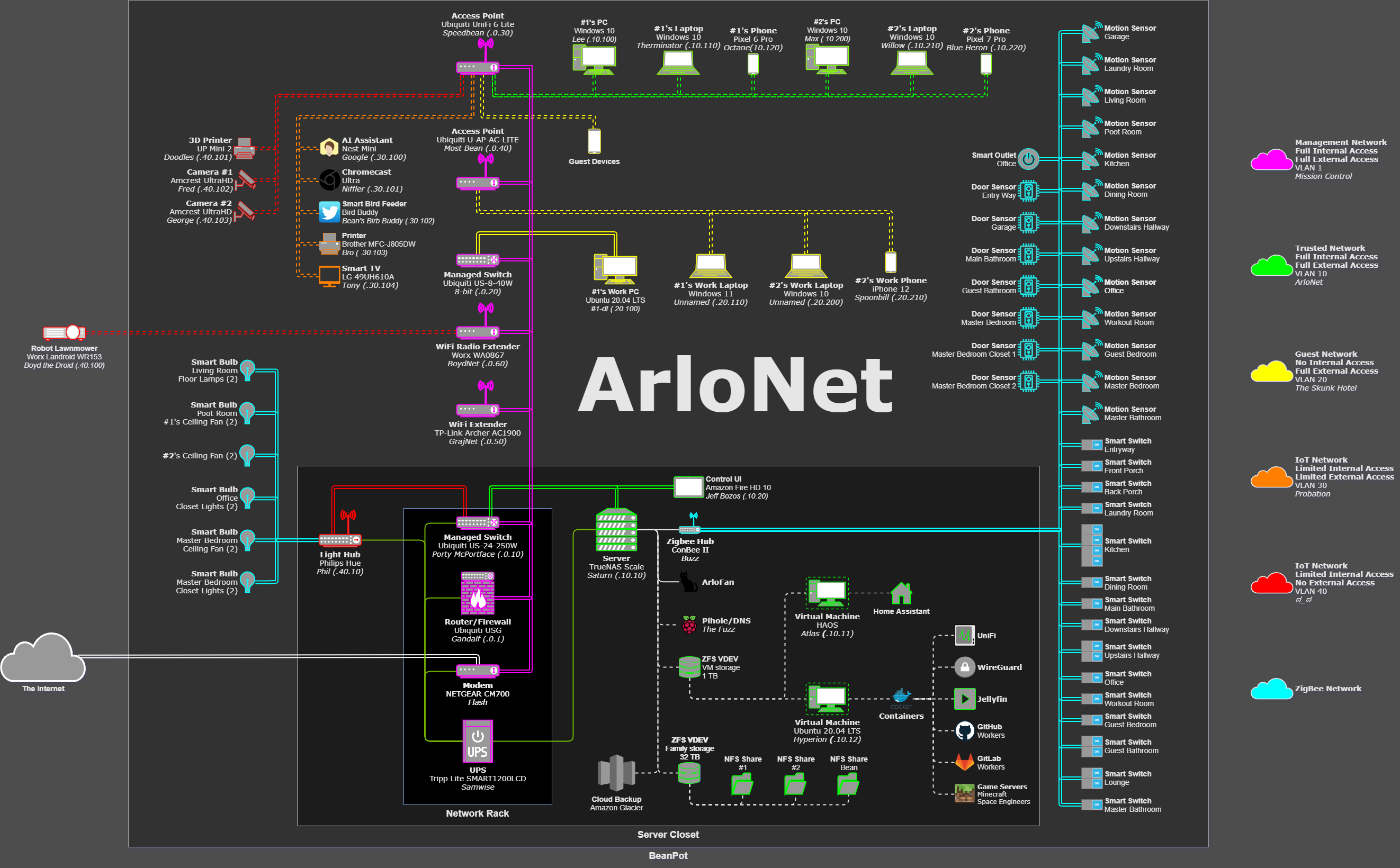Hi all, new to Lemmy but this seems to be the best community for this that is decently active. Apologies if not!
I got into home servers in my first house a couple years ago, but our stay in that house was unexpectedly brief and everything got put back into boxes. It's time to setup at the new place, and I have many improvements in mind from the first implementation - so while I wait for server parts to arrive, I decided to update the diagram for planning.
In no order, here's a list of lessons I learned from V1:
- The blade form factor doesn't work for me. I enjoyed getting one and learning about them, but my use cases are small (&quiet) enough that a tower and a small network rack works better.
- In the quest for automatic home lighting, I shouldn't have gone all-in on smart bulbs rather than switches. There get to be too many in the house, and when a couple start inevitably failing, expensive bulbs and misplaced warranty info are a gigantic pain. So now the bulbs are just for special things like ceiling fans and floor lamps.
- I need to put more attention on storage. That's what gets used the most, by multiple users, so I will use TrueNAS Scale as my host instead of ESXi. I was not enough of a power user for that to be important to me. The rest of it is mostly for play and doesn't need to be perfect.
- My media streaming needs are very simple, so I think I may like Jellyfin better than Plex.
- I need to be 'a little' more lax about security. I don't think my server is realistically likely to be heavily attacked, and when I tried to go all out on best practices, more often than not I just broke things and upset my family users. My server will not have an outside access except via VPN, and my IOT devices will not speak unless spoken to - I think that will be enough.
In particular, I tried so hard last time to have a tagged management VLAN in UniFi and always just broke connectivity between something that required a hard reset. I'm planning to skip that this time but if someone has a pointer to a good setup guide, I could try that again.
Thanks for reading/looking, all comments or suggestions are welcome! I also still need to find more applications I can selfhost so I will be keeping an eye on the community for ideas.
